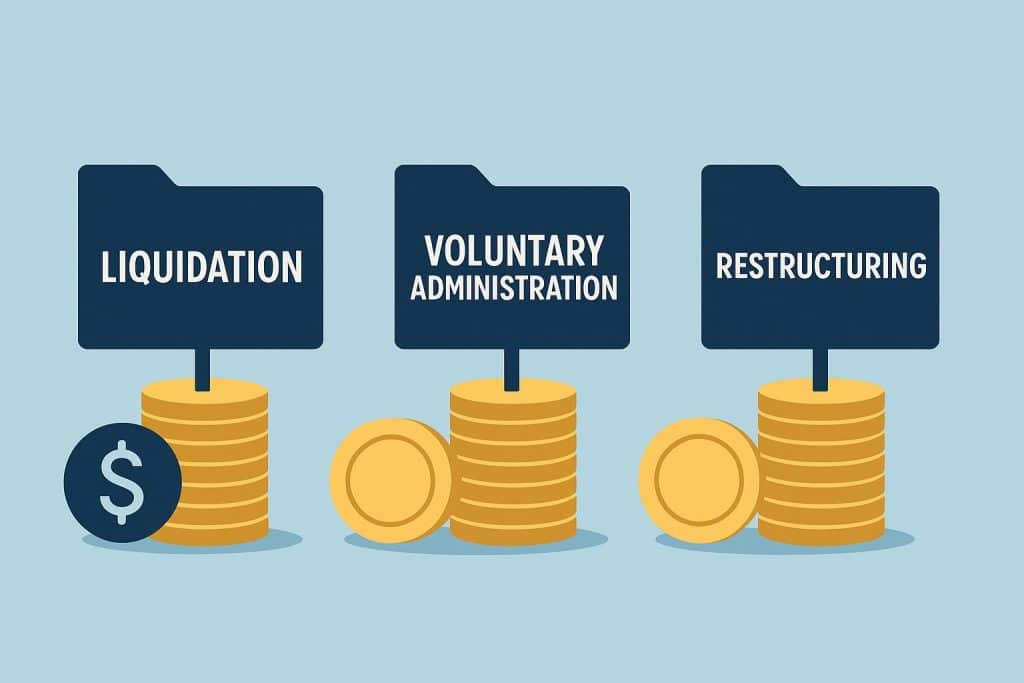When a business starts slipping financially, directors often hear three terms liquidation, voluntary administration, and restructuring. They’re not interchangeable. Each one leads to a different outcome and carries different responsibilities for the company, the directors, the employees, and the creditors.
Liquidation
Liquidation is used when a business cannot recover. The aim is to close the company properly, sell its assets, and distribute funds fairly to creditors. After the process is complete, the company is deregistered.
Liquidation is appropriate when:
- The company is insolvent
- Debts are unmanageable
- There’s no genuine chance of turning things around
- Trading would only make things worse
A registered liquidator takes control of the company and ensures everything is done correctly and transparently. This protects creditors, satisfies reporting obligations, and reduces personal risk for directors.
Voluntary Administration
Voluntary administration is a temporary pause to work out whether the company can be saved. An external administrator steps in and reviews the business in full.
During this time:
- Most creditor actions are put on hold
- The administrator assesses whether continuing to trade is worthwhile
- Options are presented to creditors, including a proposal called a DOCA (Deed of Company Arrangement)
If a DOCA is approved, the company may continue to trade under an agreed repayment plan.
If not, liquidation usually follows.
Voluntary administration is best for companies that are in serious trouble but still have a realistic chance of survival.
Small Business Restructuring (SBR)
SBR is a newer option designed specifically for smaller companies. The directors stay in control of day-to-day operations while working with a restructuring practitioner to prepare a formal plan for creditors.
Key points:
- The company keeps trading
- Directors remain in charge
- A plan is put to creditors for approval
- If accepted, the business continues with an agreed repayment arrangement
SBR works well when the business is still viable but needs structured breathing room.
Choosing the Right Path
Each option has strict rules under Australian law. Choosing the wrong one, or waiting too long, can create unnecessary problems for directors and creditors, including the ATO.
Getting early guidance ensures:
- Directors meet their legal duties
- Creditors are respected
- Employees know where they stand
- The process stays transparent and compliant
This is where experienced advisorsmake a difference. They explain the options clearly, look at the company’s actual position, and recommend the pathway that gives everyone the best, fairest outcome.
Liquidation closes a company that can’t recover.
Voluntary administration pauses everything to see if the business can survive. Small business restructuring keeps a viable company trading while debts are sorted out.
With the right advice early, directors avoid unnecessary stress and stay compliant, and creditors get a clear, fair process.
